Queretaro Museums
As you’re walking along the streets of Queretaro, be sure to visit some of the museums to learn more about the city’s interesting culture. You’ll see permanent and temporary exhibits, such as history displays, as well as paintings and sculptures.
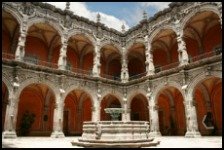 MUSEO DE ARTE DE QUERETARO (The Museum of Arts) and sometimes referred to as San Agustin Museum) was founded in September of 1988, in what was the old cloister of Saint Agustine’s church, since then it has become one of the must important spaces for cultural and artistic expression in the state. It has 15 exhibition spaces distributed between two floors. The museum regularly hosts concerts, conferences, book signings, plays, among other special events. It also offers a wide range of educational programs for all audiences. The building was constructed around 1731, and it is typical of the baroque-style architecture that you will find in Latin America. Located at the corner of Allende Street with Pino Suarez in the historic district. Recognized as one of the most popular places to visit in the city of Queretaro. Hours:Tuesday through Sunday from 10:00 AM to 7:00 PM. Visit Museum of Art Queretaro Web Page
MUSEO DE ARTE DE QUERETARO (The Museum of Arts) and sometimes referred to as San Agustin Museum) was founded in September of 1988, in what was the old cloister of Saint Agustine’s church, since then it has become one of the must important spaces for cultural and artistic expression in the state. It has 15 exhibition spaces distributed between two floors. The museum regularly hosts concerts, conferences, book signings, plays, among other special events. It also offers a wide range of educational programs for all audiences. The building was constructed around 1731, and it is typical of the baroque-style architecture that you will find in Latin America. Located at the corner of Allende Street with Pino Suarez in the historic district. Recognized as one of the most popular places to visit in the city of Queretaro. Hours:Tuesday through Sunday from 10:00 AM to 7:00 PM. Visit Museum of Art Queretaro Web Page
The Art Museum of Queretaro has four major sections:
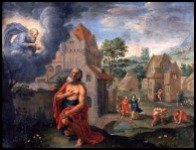 EUROPEAN SECTION contains a small but relevant collection of European paintings. Six anonymous Spanish paintings of biblical themes are of special mention. From Italy “La Oración del Huerto” by Luca Giordano, a famous Italian painter that served Philip II of Spain, and a copy of “El Rapto de Europa” by Jerónimo Viscardini of Venice, made in 1857 as a work for the San Carlos Academy of Mexico.
EUROPEAN SECTION contains a small but relevant collection of European paintings. Six anonymous Spanish paintings of biblical themes are of special mention. From Italy “La Oración del Huerto” by Luca Giordano, a famous Italian painter that served Philip II of Spain, and a copy of “El Rapto de Europa” by Jerónimo Viscardini of Venice, made in 1857 as a work for the San Carlos Academy of Mexico.
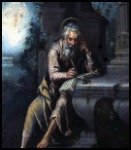 MANNERISM SECTION represents a bridge between the Baroque and the Renascence which began in Italy. The prime characteristics of a Mannerist painting is the delicate drawing, the dramatization and exaggeration of the characters, the alteration of anatomic proportions and the use of arbitrary effects in light and color with asymmetric compositions. Likewise the mannerist used a distorted space and placed their characters in impossible stances. In Mexico the paintings of the late 16th century and early 17th century are classified as mannerism. During the 16th century a dozen professional European painters were living in Mexico. Simón Pereyns, Andrés de Conche and Luis Lagarto made up the first generation. In the early 17th century, the second generation emerged, and consisted of both European and Hispanic painters. These painters were inclined to a more realistic approach and a sense of formality. In the second generation we find Baltazar Echave Orio, Luis Juáres and Baltazar de Echave Ibía. The Art Museum of Queretaro has a wide collection of mannerist painters.
MANNERISM SECTION represents a bridge between the Baroque and the Renascence which began in Italy. The prime characteristics of a Mannerist painting is the delicate drawing, the dramatization and exaggeration of the characters, the alteration of anatomic proportions and the use of arbitrary effects in light and color with asymmetric compositions. Likewise the mannerist used a distorted space and placed their characters in impossible stances. In Mexico the paintings of the late 16th century and early 17th century are classified as mannerism. During the 16th century a dozen professional European painters were living in Mexico. Simón Pereyns, Andrés de Conche and Luis Lagarto made up the first generation. In the early 17th century, the second generation emerged, and consisted of both European and Hispanic painters. These painters were inclined to a more realistic approach and a sense of formality. In the second generation we find Baltazar Echave Orio, Luis Juáres and Baltazar de Echave Ibía. The Art Museum of Queretaro has a wide collection of mannerist painters.
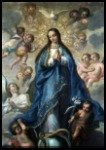
BAROQUE ART SECTION During the 17th century the Baroque period started in Mexico and lasted until the end of the 18th century. With a clear Spanish influence, the paintings began with a vigorous style, filled with contrasts of light and dark. Later in this period of time, the paintings become shinier, resembling the architecture of the time. These paintings put expression before technique. Painters like Juan and Nicolás Rodríguez Juárez executed their paintings with a greater degree of delicacy and emotion. These paintings use soft and free strokes and vivid colors. Later in the late 18th century, this road led to the popularity of painters including: Miguel Cabrera, Francisco Anotnio Vallejo and José de Alzíbar.
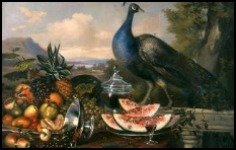
SSAN CARLOS ACADEMY SECTION is comprised of Mexican paintings of the 19th century. The paintings of this time have more light and different use of color, plus they emphasized the use of items and figures. The religious paintings of this time period portrayed images from the Old Testament. Typical themes in these paintings of the 19th century, include wide landscapes and the portraying of historic events.
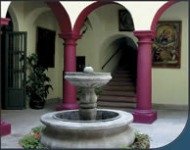 CASA DE LA ZACATECANA MUSEUM This beautiful and legendary baroque style home dates back to the 17th century. This Queretaro mansion is now a museum which contains 13 exhibit halls and 2 patios. Here you can admire paintings, sculptures, mirrors and furniture from the 17th to the 19th centuries. It received its name (which means house of a woman from Zacatecas) from a legend: the Zacatecana (the house owner), sent someone to kill her husband and later got the hired murderer killed too. Both were buried secretly underneath the stables, leaving the crimes undetected. Not long after, the Zacatecana was also murdered. Nobody ever discovered who was responsible for the revenge. Located at 59 Av. Independencia. Museum hours: Tuesday through Sunday from 11:00 AM to 7:00 PM.
CASA DE LA ZACATECANA MUSEUM This beautiful and legendary baroque style home dates back to the 17th century. This Queretaro mansion is now a museum which contains 13 exhibit halls and 2 patios. Here you can admire paintings, sculptures, mirrors and furniture from the 17th to the 19th centuries. It received its name (which means house of a woman from Zacatecas) from a legend: the Zacatecana (the house owner), sent someone to kill her husband and later got the hired murderer killed too. Both were buried secretly underneath the stables, leaving the crimes undetected. Not long after, the Zacatecana was also murdered. Nobody ever discovered who was responsible for the revenge. Located at 59 Av. Independencia. Museum hours: Tuesday through Sunday from 11:00 AM to 7:00 PM.
Visit Museum Zacatecana Web Page
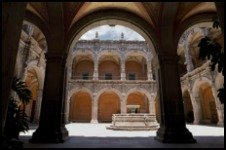 MUSEO DE LA CIUDAD, also known as the Queretaro City Museum, was formerly the Capuchin Convent. In 1997, it was transformed into a museum containing contemporary art. Inside its walls diversity beats, the ancient baroque structure adorned with figures of musical angels, saints and odd animals talks to the voices of the artists from the 21st Century, and its cross-linked patios, its mysterious hallways and its wide rooms filled with light are the showcase for local and foreign creators.
MUSEO DE LA CIUDAD, also known as the Queretaro City Museum, was formerly the Capuchin Convent. In 1997, it was transformed into a museum containing contemporary art. Inside its walls diversity beats, the ancient baroque structure adorned with figures of musical angels, saints and odd animals talks to the voices of the artists from the 21st Century, and its cross-linked patios, its mysterious hallways and its wide rooms filled with light are the showcase for local and foreign creators.
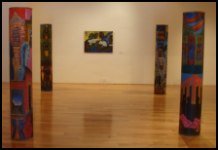
The museum is now a vibrant center of Queretaro's activities including exchange of ideas, premiers of films, plays, photography exhibitions, art installations and dance shows that change constantly. One cycle after another, the City’s Museum gives the opportunity to young artists to show their work and share it with the audience.
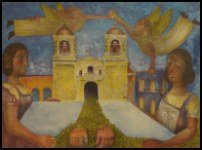
Literature, cinema, design, arts, puppets and dance, all coexist in this unique space. At the same time, education plays a predominant part since all year long courses, as different as the assistants’ interests, are offered. The Queretaro City’s Museum has a Child’s Library, a unique space where children coexist with books and the pleasure of reading. This library for children has a monthly schedule of playful activities for kids: concerts, theater, movies, workshops and activities based on the museum’s exhibitions.
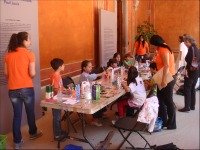
If you visit the museum during summer you’ll find out that it vibrates with the cheerful laughter of kids who enjoy the Childrens’ Art and Literature Festival (Festival de Arte y Literatura Infantiles). The workshops offered in this special festival allow the youngest to get to know themselves better and learn to express through new ways, developing their creativity and letting their imagination fly while they hear, compose and discover new dimensions. Located on the corner of Vicente Guerrero and Av. Pino Suarez. Hours: Tuesday through Sunday from 11 AM to 7 PM.
Visit City Museum Web Page
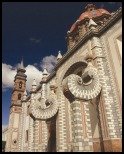 EX-CONVENT of SANTA ROSA VITERBO is also known as the Regional Museum. This museum possesses one of the most important vice regal paintings of the country. The museum has 16 permanent exhibit rooms featuring pre-Hispanic objects, as well as national and local history exhibits. It also includes valuable objects from the time of Mexico's independence and paintings, sculptures and furniture dating back to the 18th century . Located at 3 Corregidora. Hours: Tuesday through Sunday from 9:00 AM to 8:00 PM.
EX-CONVENT of SANTA ROSA VITERBO is also known as the Regional Museum. This museum possesses one of the most important vice regal paintings of the country. The museum has 16 permanent exhibit rooms featuring pre-Hispanic objects, as well as national and local history exhibits. It also includes valuable objects from the time of Mexico's independence and paintings, sculptures and furniture dating back to the 18th century . Located at 3 Corregidora. Hours: Tuesday through Sunday from 9:00 AM to 8:00 PM.
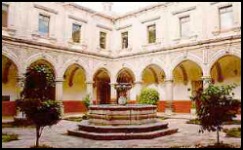 THE MATHS MUSEUM is housed in the Ex-Convent of San Francisco Javier. Built between the late 17th and early 18th centuries for the Jesuit friars to institute the Theology and Philosophy College, the building was later converted into the Civil College, the University of Queretaro, the Central Preparatory School, the Language School, the Veterinary and Zoo technique Schools and finally the Philosophy and Letters School.
THE MATHS MUSEUM is housed in the Ex-Convent of San Francisco Javier. Built between the late 17th and early 18th centuries for the Jesuit friars to institute the Theology and Philosophy College, the building was later converted into the Civil College, the University of Queretaro, the Central Preparatory School, the Language School, the Veterinary and Zoo technique Schools and finally the Philosophy and Letters School.
When we think of Geometry, usually we think of Euclidean Geometry. Rarely do we think of the Geometry that we inherited from our American ancestors, especially the Mayas and the Aztecs. This work takes us back in time to our Mathematical Roots, to the Geometry of Nature.
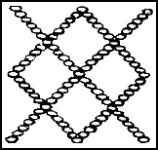
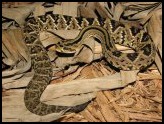
The Canamayté Quadrivertex is the central square in the row of squares on the back of the Yucatecan rattlesnake (Crotalus Durissus Tzabcan Yucateco). The four sides of the square represent the number 4, which is an attribute of the Sun and of this snake, and also symbolize the four cardinal points and the quadrature of the Sun and the Moon.
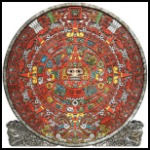
The concern of the Mayas to measure time led them to make calendar and astronomical calculations as precise as those that are made today by modern astronomers.
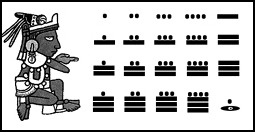
To make precise calendar and astronomical calculations a measuring and counting tool was necessary. There emerged the vigesimal (base 20) system, and the most important invention of the Zero.
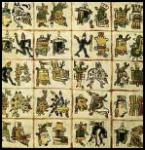
It is through their writing with pictographic images that we have come to know the customs and decipher the knowledge of the Mayas, including their positional numeration system.
It would appear that the only reason that the pre-Hispanic cultures chose the vigesimal system is the obvious one: not only can we count with are fingers, but also with our toes. The Mayas prefer-red to use all the "digits", those associating the vigesimal system with my own self (el Propio yo).
In counting here the number four is fundamental, given that it is both solar and Crotalic. Counting from the east vertex of the Canamayté four scales to the left and then four to the right to be at the central scale of the Canamayté, we have the angle of the solstice opening.
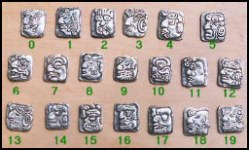
The Maya representation of the numbers using bars and dots was most of the time combined with a set of beautiful head numerals which are the Maya glyphs.
In the jungles of southern Mexico and the neighboring countries you can find carved altars, ceramics and stucco all showing that the Maya civilization had not only a unique system of writing but also a precious artistic representation which beauty is a real inspiration for many artists.
Return to Queretaro Main Page
Return to San Miguel Day Trips
Return to San Miguel Main Page
Return to best-of-mexico-travel.com








 MUSEO DE ARTE DE QUERETARO (The Museum of Arts) and sometimes referred to as San Agustin Museum) was founded in September of 1988, in what was the old cloister of Saint Agustine’s church, since then it has become one of the must important spaces for cultural and artistic expression in the state. It has 15 exhibition spaces distributed between two floors. The museum regularly hosts concerts, conferences, book signings, plays, among other special events. It also offers a wide range of educational programs for all audiences. The building was constructed around 1731, and it is typical of the baroque-style architecture that you will find in Latin America. Located at the corner of Allende Street with Pino Suarez in the historic district. Recognized as one of the most popular places to visit in the city of Queretaro. Hours:Tuesday through Sunday from 10:00 AM to 7:00 PM. Visit Museum of Art Queretaro Web Page
MUSEO DE ARTE DE QUERETARO (The Museum of Arts) and sometimes referred to as San Agustin Museum) was founded in September of 1988, in what was the old cloister of Saint Agustine’s church, since then it has become one of the must important spaces for cultural and artistic expression in the state. It has 15 exhibition spaces distributed between two floors. The museum regularly hosts concerts, conferences, book signings, plays, among other special events. It also offers a wide range of educational programs for all audiences. The building was constructed around 1731, and it is typical of the baroque-style architecture that you will find in Latin America. Located at the corner of Allende Street with Pino Suarez in the historic district. Recognized as one of the most popular places to visit in the city of Queretaro. Hours:Tuesday through Sunday from 10:00 AM to 7:00 PM. Visit Museum of Art Queretaro Web Page
 EUROPEAN SECTION contains a small but relevant collection of European paintings. Six anonymous Spanish paintings of biblical themes are of special mention. From Italy “La Oración del Huerto” by Luca Giordano, a famous Italian painter that served Philip II of Spain, and a copy of “El Rapto de Europa” by Jerónimo Viscardini of Venice, made in 1857 as a work for the San Carlos Academy of Mexico.
EUROPEAN SECTION contains a small but relevant collection of European paintings. Six anonymous Spanish paintings of biblical themes are of special mention. From Italy “La Oración del Huerto” by Luca Giordano, a famous Italian painter that served Philip II of Spain, and a copy of “El Rapto de Europa” by Jerónimo Viscardini of Venice, made in 1857 as a work for the San Carlos Academy of Mexico.
 MANNERISM SECTION represents a bridge between the Baroque and the Renascence which began in Italy. The prime characteristics of a Mannerist painting is the delicate drawing, the dramatization and exaggeration of the characters, the alteration of anatomic proportions and the use of arbitrary effects in light and color with asymmetric compositions. Likewise the mannerist used a distorted space and placed their characters in impossible stances. In Mexico the paintings of the late 16th century and early 17th century are classified as mannerism. During the 16th century a dozen professional European painters were living in Mexico. Simón Pereyns, Andrés de Conche and Luis Lagarto made up the first generation. In the early 17th century, the second generation emerged, and consisted of both European and Hispanic painters. These painters were inclined to a more realistic approach and a sense of formality. In the second generation we find Baltazar Echave Orio, Luis Juáres and Baltazar de Echave Ibía. The Art Museum of Queretaro has a wide collection of mannerist painters.
MANNERISM SECTION represents a bridge between the Baroque and the Renascence which began in Italy. The prime characteristics of a Mannerist painting is the delicate drawing, the dramatization and exaggeration of the characters, the alteration of anatomic proportions and the use of arbitrary effects in light and color with asymmetric compositions. Likewise the mannerist used a distorted space and placed their characters in impossible stances. In Mexico the paintings of the late 16th century and early 17th century are classified as mannerism. During the 16th century a dozen professional European painters were living in Mexico. Simón Pereyns, Andrés de Conche and Luis Lagarto made up the first generation. In the early 17th century, the second generation emerged, and consisted of both European and Hispanic painters. These painters were inclined to a more realistic approach and a sense of formality. In the second generation we find Baltazar Echave Orio, Luis Juáres and Baltazar de Echave Ibía. The Art Museum of Queretaro has a wide collection of mannerist painters.
 CASA DE LA ZACATECANA MUSEUM This beautiful and legendary baroque style home dates back to the 17th century. This Queretaro mansion is now a museum which contains 13 exhibit halls and 2 patios. Here you can admire paintings, sculptures, mirrors and furniture from the 17th to the 19th centuries. It received its name (which means house of a woman from Zacatecas) from a legend: the Zacatecana (the house owner), sent someone to kill her husband and later got the hired murderer killed too. Both were buried secretly underneath the stables, leaving the crimes undetected. Not long after, the Zacatecana was also murdered. Nobody ever discovered who was responsible for the revenge. Located at 59 Av. Independencia. Museum hours: Tuesday through Sunday from 11:00 AM to 7:00 PM.
CASA DE LA ZACATECANA MUSEUM This beautiful and legendary baroque style home dates back to the 17th century. This Queretaro mansion is now a museum which contains 13 exhibit halls and 2 patios. Here you can admire paintings, sculptures, mirrors and furniture from the 17th to the 19th centuries. It received its name (which means house of a woman from Zacatecas) from a legend: the Zacatecana (the house owner), sent someone to kill her husband and later got the hired murderer killed too. Both were buried secretly underneath the stables, leaving the crimes undetected. Not long after, the Zacatecana was also murdered. Nobody ever discovered who was responsible for the revenge. Located at 59 Av. Independencia. Museum hours: Tuesday through Sunday from 11:00 AM to 7:00 PM.  MUSEO DE LA CIUDAD, also known as the Queretaro City Museum, was formerly the Capuchin Convent. In 1997, it was transformed into a museum containing contemporary art. Inside its walls diversity beats, the ancient baroque structure adorned with figures of musical angels, saints and odd animals talks to the voices of the artists from the 21st Century, and its cross-linked patios, its mysterious hallways and its wide rooms filled with light are the showcase for local and foreign creators.
MUSEO DE LA CIUDAD, also known as the Queretaro City Museum, was formerly the Capuchin Convent. In 1997, it was transformed into a museum containing contemporary art. Inside its walls diversity beats, the ancient baroque structure adorned with figures of musical angels, saints and odd animals talks to the voices of the artists from the 21st Century, and its cross-linked patios, its mysterious hallways and its wide rooms filled with light are the showcase for local and foreign creators.
 EX-CONVENT of SANTA ROSA VITERBO is also known as the Regional Museum. This museum possesses one of the most important vice regal paintings of the country. The museum has 16 permanent exhibit rooms featuring pre-Hispanic objects, as well as national and local history exhibits. It also includes valuable objects from the time of Mexico's independence and paintings, sculptures and furniture dating back to the 18th century . Located at 3 Corregidora. Hours: Tuesday through Sunday from 9:00 AM to 8:00 PM.
EX-CONVENT of SANTA ROSA VITERBO is also known as the Regional Museum. This museum possesses one of the most important vice regal paintings of the country. The museum has 16 permanent exhibit rooms featuring pre-Hispanic objects, as well as national and local history exhibits. It also includes valuable objects from the time of Mexico's independence and paintings, sculptures and furniture dating back to the 18th century . Located at 3 Corregidora. Hours: Tuesday through Sunday from 9:00 AM to 8:00 PM.
 THE MATHS MUSEUM is housed in the Ex-Convent of San Francisco Javier. Built between the late 17th and early 18th centuries for the Jesuit friars to institute the Theology and Philosophy College, the building was later converted into the Civil College, the University of Queretaro, the Central Preparatory School, the Language School, the Veterinary and Zoo technique Schools and finally the Philosophy and Letters School.
THE MATHS MUSEUM is housed in the Ex-Convent of San Francisco Javier. Built between the late 17th and early 18th centuries for the Jesuit friars to institute the Theology and Philosophy College, the building was later converted into the Civil College, the University of Queretaro, the Central Preparatory School, the Language School, the Veterinary and Zoo technique Schools and finally the Philosophy and Letters School.
























